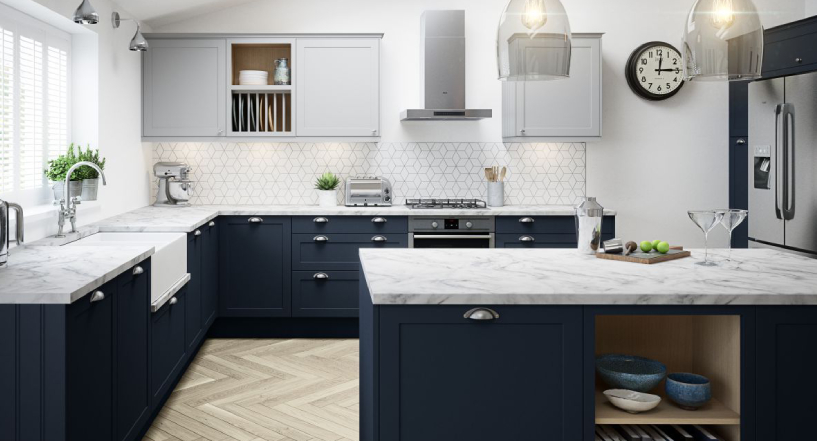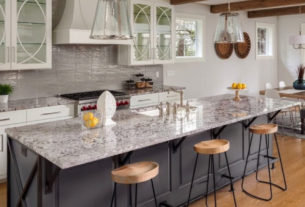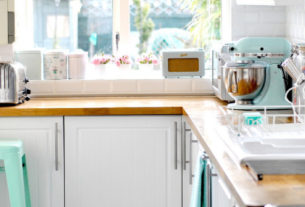Kitchen Cabinet refacing is a project that can be done at home as long as you follow specific steps. In this guide, we give you a detailed chart of the process and the materials that will be needed to complete it.
Materials:
• A utility knife with straightedge Make sure it is sharp.
• Clean clothes to remove dust.
• Sandpaper to remove the old varnish or paint.
• Contact adhesive, in case you are not using self-sticking veneer.
• A wood block or pressure roller.
• Veneer or Formica laminate in your preference and style.
Guide:
• First, take off any hardware on the cabinets. These include things like hinges, knobs, and handles. If you are going to replace them later on then, keep them in a safe place or else discard them. Remove the doors too.
• Now sand down every surface of the cabinets. This is essential to remove the old varnish, laminate or paint covering on them. The type of sandpaper you will need will depend upon the thickness of the coat. For example, if you have a thick layer begin with an 80 grit paper, then use a 120 grit sandpaper and finish off with a 240 one.
• Remove all the dust using a clean cloth. Double check the corners as they tend to accumulate dust. A clean surface is fundamental for easy application of the veneer and a laminate that last for years. Leftover dust particles can reduce the adhesion of the veneer and cause it to peel off in sections.
• Be it a veneer or a laminate; they come in large sheet forms. They need to be cut down to the size and specifications of the cabinets before they can be applied. The best way to do this is to ask your hardware store to cut them. Measure the stiles, rails, and sides of the cabinet. If you are refacing the doors too, then measure the front, top, bottom and sides of them. Give these measurements to the merchant, and they can cut the veneer accordingly.
• If you are using self-stick veneer, directly apply the strips to each section. If not, then put the contact adhesive on the piece and the cabinet. Leave it for some time. When it is not tacky to touch, stick the laminate or veneer on to it. Always move in one direction, i.e., top to bottom or vice versa.
• Press each section you apply hard. Use a wood block or pressure roller to remove any air bubbles that may have gotten trapped. This should be done before the adhesive cures, and it is crucial because it will make sure that the veneer has complete adhesion.
• The last step is to use the straightedge knife to trim the veneer. Generally, there will be excess material that overlaps with the opening of the cabinet. To shave it, use the knife as your guide. Slip the blade at the back and apply pressure to cut the excess material. Always go slowly so that you do not slip and damage the entire strip.




